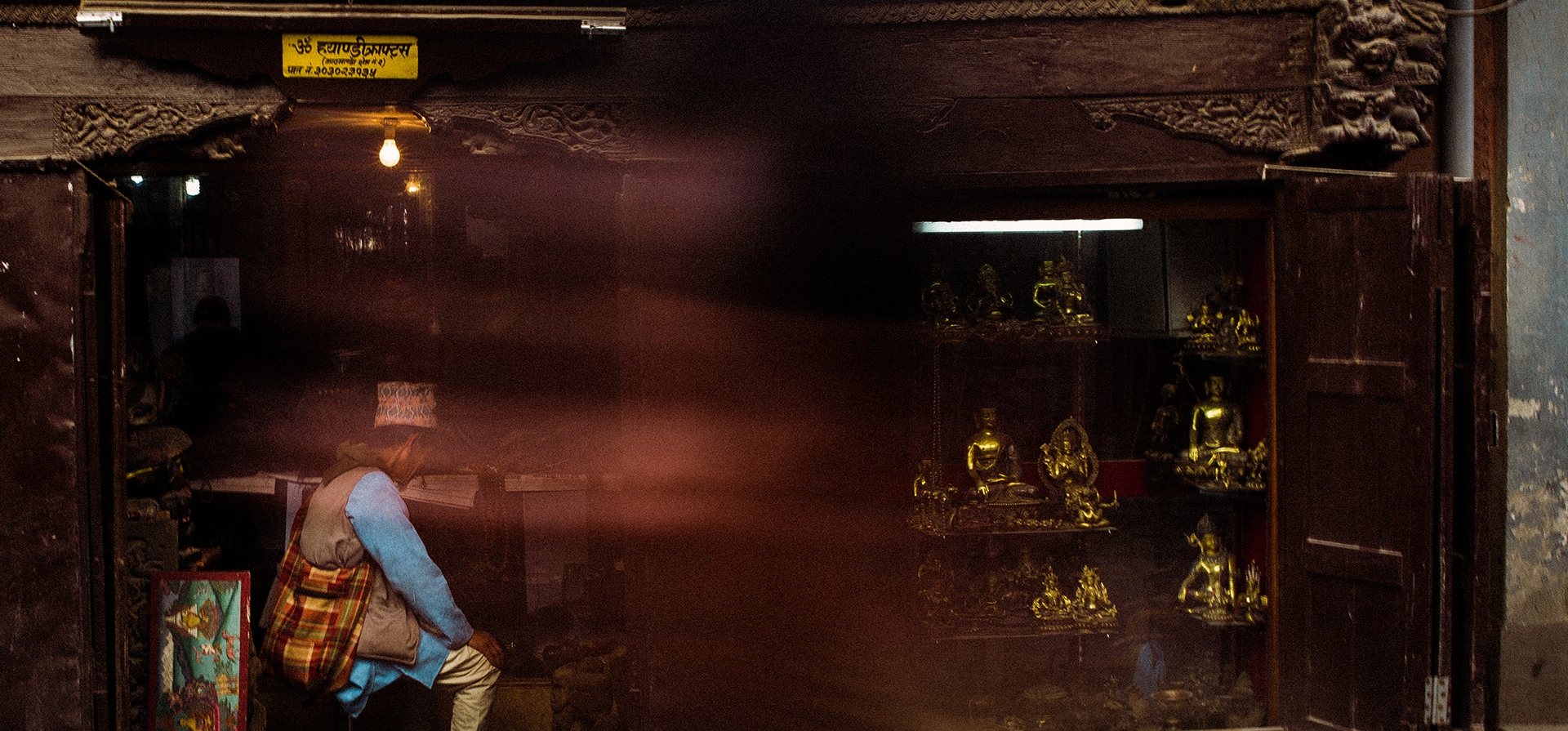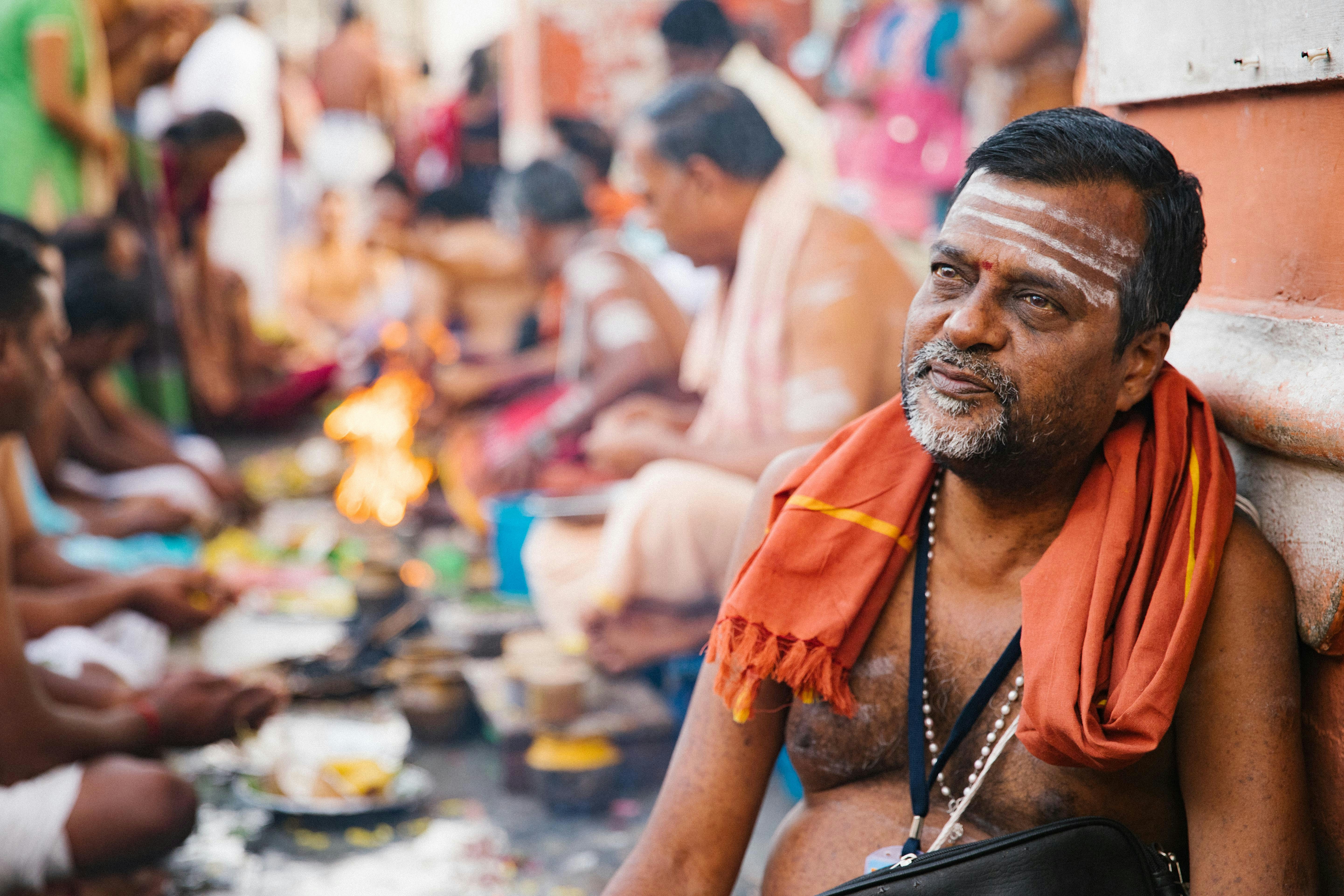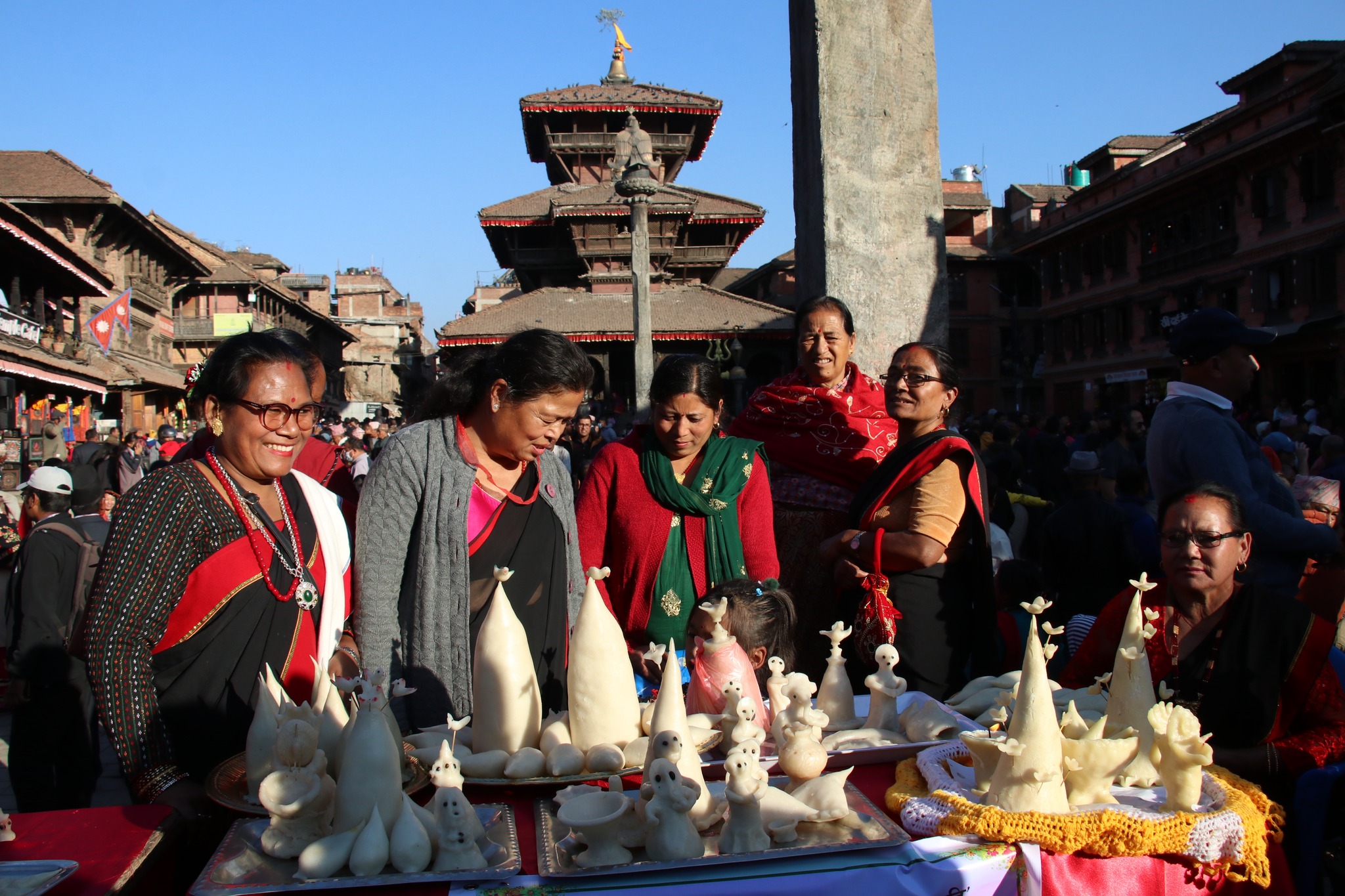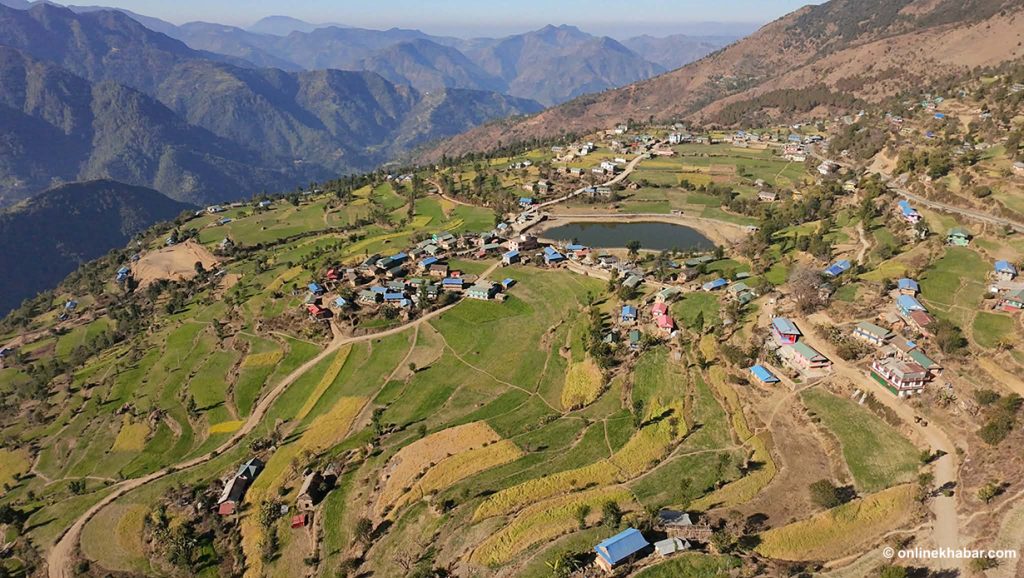The other day I strapped a lead on my 40 kg Alsatian named Krypto, decided to take a trip down memory lane, and go white-man-walking-the-dog in Thamel. He had never been there before in all his nine years, and I hadn’t visited it in over a decade, even though I live just a few kilometers away.
It’s not that I don’t like Thamel. I have many fond memories of it. But when living next to Jhamel, it seems that any trip to Thamel is unnecessary, especially if what you are after is continental food or a loud bar. And after all that, there’s Foodmandu.
My first stop was the Garden of Dreams, a new addition to Thamel. But they wouldn’t let me in with my comfort dog, and I was immediately put off by the entrance fee for tourists. What’s inside, Bhaktapur?
So instead we turned into the familiar gullies lined with tourist traps, gem shops and other stores filled with fake goods. Thamel is a unique spot on the planet, rivaled only by Khaosan Road in the heart of Bangkok. But our version is not famous for its fried-bug vendors. Instead, we are famous for ripped DVDs, small bronze statues, giant Khukuris, Tiger Balm and knockoffs of just about anything else.
My first trip to Thamel was back in the early 2000s, when my job was to shepherd an American study-abroad students for a night out in the town. Their day job was to study real Buddhism in Boudha (vs. the fake stuff they were learning in America).
I’ll never forget taking that group of 15 or so women undergraduates to the Underground Bar, and walking them into a crowd of all-Nepali boys dancing with each other to the tune of Y-M-C-A. The girls all looked at me; had I taken them to a gay bar?
No, I had to explain, this is just the way it is here. Guys dance with each other in mirrored bars, and almost everyone is straight (and a Nepali girl wouldn’t be caught dead in a place like this). We all had a fantastic time dancing and drinking warm beer, and several marriage proposals ensued.
Over the years I have spent here, I was immediately attracted to Fire & Ice from the first bite as an ex-New Yorker who grew up in a pizza parlor. This restaurant is truly a national treasure, and I am so glad to see that over the years nothing much there has changed–not even the staff. The manager has been there for 18 years, and he still remembers my name (although he was a bit shocked that I now had brought in a huge dog).
“Where have you been?” he asked.
I told him that now I just order online.
But when ordering online, you don’t experience the charm of Thamel, and part one of Thamel’s charm is not found in the shabby structures with all the glittering baubles that they contain. It is the people of Thamel that shine bright, even brighter than the millions of bronze Buddhas that can be had every few meters or so.
Wiki Commons; (Opener) Esmar Abdul Hamid/Flickr.
In Thamel, there is a concentration of hospitality that can’t be found anywhere else on the planet, even if this overt graciousness is fueled by a salesman’s desperation. But if money is all that mattered to folks here, they would have left this part of town long ago.
I asked Gauri Dongol of Saurab Music how things were going, as he sat in his shop that has remained exactly the same since 1997. He replied, “Thik-chaa, but down 90%.”
I was astounded by his answer, and even more surprised that his shop still existed, as I don’t know anyone with a DVD player anymore. So I asked Gauri what he was going to do; how is he going to innovate; what was his future?
Gauri replied with a most quizzical look (like I was silly for asking), “Stay here and carry on…ke garne.”
In Thamel, there is a concentration of hospitality that can’t be found anywhere else on the planet, even if this overt graciousness is fueled by a salesman’s desperation.
So must be the sentiment among most business owners who continue to wait out Nepal’s interminable tourist drought. But one wonders what these owners are thinking. There are manufactures who try and hawk trekking goods to tourists who come fully prepared; money exchanges who try to exchange currencies with folks that have none; garment manufacturers who hope to sell in a world now dominated by China, Vietnam and Bangladesh, perhaps, wait for hippie fashions to return, ignore the fact that when they do, folks will shop at their local H&M or Uniqlo instead.
When looking at Thamel businesses in total, one sees an inspiring sense of hope. which is mixed with a reality of unspoken hopelessness. This is the second part of Thamel’s tarnished charm: an innocent and complacent optimism.
***
As a business person in another lifetime, I find it incredulous that there are so many shops that sit side-by-side selling the same goods, year after year, with very little profit to make. The margins must be low, and the sales even lower. Yet everyone is still smiling, as young women happily douse the streets daily with water in order to keep the dust down, oblivious to the dust that is settled over everything else.
This is the grand metaphor of Nepal–the smiles and the continued trying, regardless of the futility.
Yet personally, I am comforted by this happy stagnation. I left, the west, where continual corporate improvement programs have grown into something worthy of escaping, and its rat-race decades ago . Glassy steel towers and smooth roadways filled with a spooky and unnatural uniformity fill their landscape, where they have literally paved over paradise to put up a parking lot.
It is where Joni Mitchell is only found on the iTunes Store, streamed globally to all of your devices.
For the moment, Thamel is a haven from a fully overdeveloped world. But there are signs of change, as many of the older structures are being remolded into something shinier, and businesses are slowly changing as well.
In the building where my favorite bookstore used to be, now there is a new bank. Instead of cyber shops, there are organic coffee bars. Instead of bagels at Pumpernickel Bakery, there are only croissants.
Gone now is Pilgrims, making way for what is soon to be an indoor mall. What was once the entire west side of a major gully is now a construction site, albeit a quiet and empty one. The signs are there. Thamel is about to morph, even if it takes another 50 years.
Jigs Gaton is a quirky kinda-American migrant, happily living in Dhobighat with family and friends, and who would like to see Thamel preserved as a living museum.
***
Also read

























